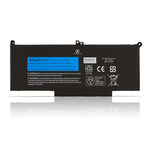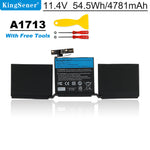You have no items in your shopping cart.
How long does the HeartStart Defibrillator last?

What is the HeartStart Defibrillator ?
As an important emergency equipment, the defibrillator monitor is not only an indispensable and irreplaceable force in the rescue process of sudden heart disease, but also the most critical and effective treatment method for preventing sudden death from heart disease.
Philips is not only a trusted global supplier of monitors and defibrillators . Philips' HeartStart defibrillator products have a 40-year history. Currently, the HeartStart series of monitors/defibrillators are the most advanced products in the defibrillation field and can meet the emergency needs of all links in the pre-hospital, in-hospital and patient transportation process.
During the manufacturing process, Philips follows the industry's best management practices. Before leaving the factory, the defibrillator must undergo tests including safety testing, functional testing and environmental stress testing to simulate real-world use.
The product can "check itself", performing automatic self-inspections every hour, day, and week, truly achieving lifelong maintenance-free.
Lifespan of the HeartStart Defibrillator
Take the HeartStart MRx , for example. The HeartStart MRx is powered by a rechargeable lithium-ion battery. The available battery charge can be easily determined by viewing the convenient battery level indicator on the device display or by checking the fuel gauge on the battery itself. In addition, an external AC or DC power module can be used as an auxiliary power source and for continued battery charging.
A fully charged battery should always be installed so that the device is always ready for use, regardless of the availability of AC/DC power at the point of care. When pacing, AC/DC power should be connected if possible to prevent eventual battery depletion that would interrupt pacing. Whenever possible, keep the battery fully charged.
Batteries should be used as the main power source. AC/DC should be used as auxiliary power supply if required. If an AC/DC power module is used as the sole power source, the HeartStart MRx will take longer to charge to the required energy level.

Kingsener For M5070A M5066A M5067A M5068A 861304 Replacement Battery 9V 2019-12
HeartStart MRx Battery Life
The life of the defibrillator battery depends on the frequency and duration of use. Under normal circumstances , its service life is about 2 years. Improper use and maintenance will shorten the battery life. To ensure the performance of the battery, it should be charged as soon as possible when the power is less than 40%.
To ensure the safety of the device, when the chip inside the battery has worked for a cumulative total of 6 months, the device will remind you to calibrate the battery. At this time, a battery calibration lasting up to 11 hours will be required.
If the device prompts that the battery test fails, the battery should be replaced. It is recommended to purchase accessories in advance so that it can be replaced at a critical moment.
How to buy batteries?
Choose a high-quality battery with a brand and warranty, and it is more secure to be professionally tested before leaving the factory. Once the battery specifications are determined, you can order a new battery.
Welcome to purchase in our store: https://www.batterymall.com.
Battery Maintenance
The defibrillator is very easy to maintain. The only problem is the battery maintenance, which is the key point of the instrument maintenance.
HeartStart MRx can be powered by AC power or battery. After the battery is installed in the defibrillator , it should be charged for another 12 hours after the battery charging LED turns green to ensure that the battery reaches 100%. The instrument should be connected to AC power at ordinary times.
Fully charge the battery after each use, otherwise the battery capacity and life will be reduced. If the defibrillator is stored without AC power for more than 1 month, charge the battery for 48 hours, then remove it from the instrument and place it in a cool, dry place.
However, for defibrillators that have not been used for a long time, you must ensure that the battery is normal before using it. If the battery is not charged for too long (more than 3 months), it may cause permanent damage to the battery and need to be replaced.
You should also perform a "battery capacity test" any time you are concerned about the battery's ability to provide power . If your storage and use procedures ensure that you always have another charged battery available, you can perform a "battery capacity test" less frequently.
Battery Storage
Leaving the battery at a temperature above 40° C (104° F) for a long time will reduce the battery capacity and shorten the battery life . To maximize the life, the storage temperature should be 15°C~30°℃(59°F~86°F).
Batteries should be used regularly and rotated to distribute the workload. When storing batteries, ensure that the battery terminals do not come into contact with metal objects.
Battery life expectancy
The expected life of the battery depends on how often and how long it is used. With proper maintenance and storage, the expected life of the battery is up to 2 years. Under heavy use, the life is shorter. The production date is marked on the bottom of the nameplate on the back of the battery.
Discard the battery
When a battery shows visible signs of damage, or fails the "Battery Capacity Test", it should be discarded. When discarding batteries, pay attention to environmental protection and dispose of them properly in accordance with local regulations.
If this article still doesn't help your laptop battery, you can buy a new battery at BatteryMall.com
If you want to learn more about batteries, please visit:BatteryMall.com/blogs/support








